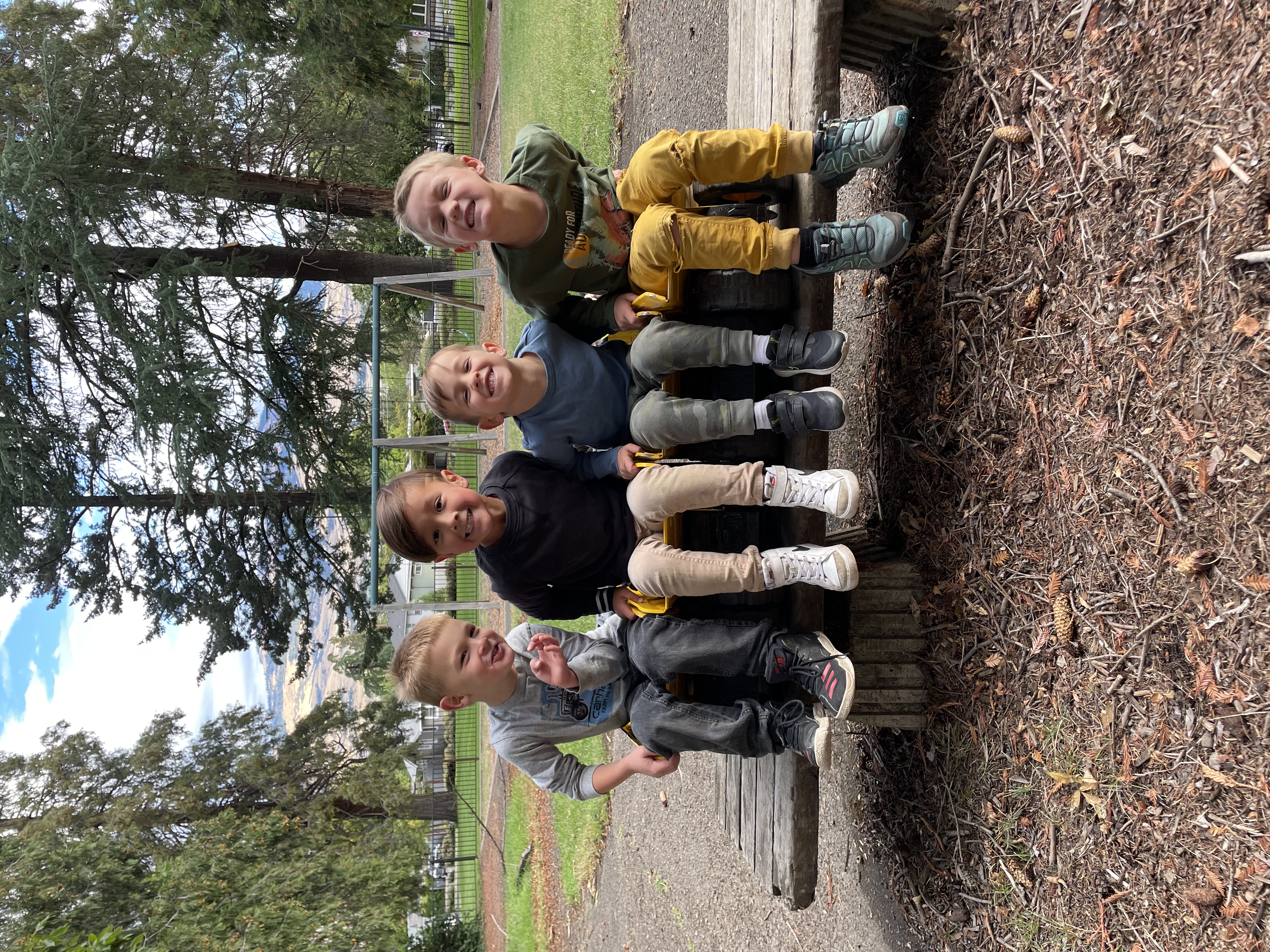8:30 – Welcome!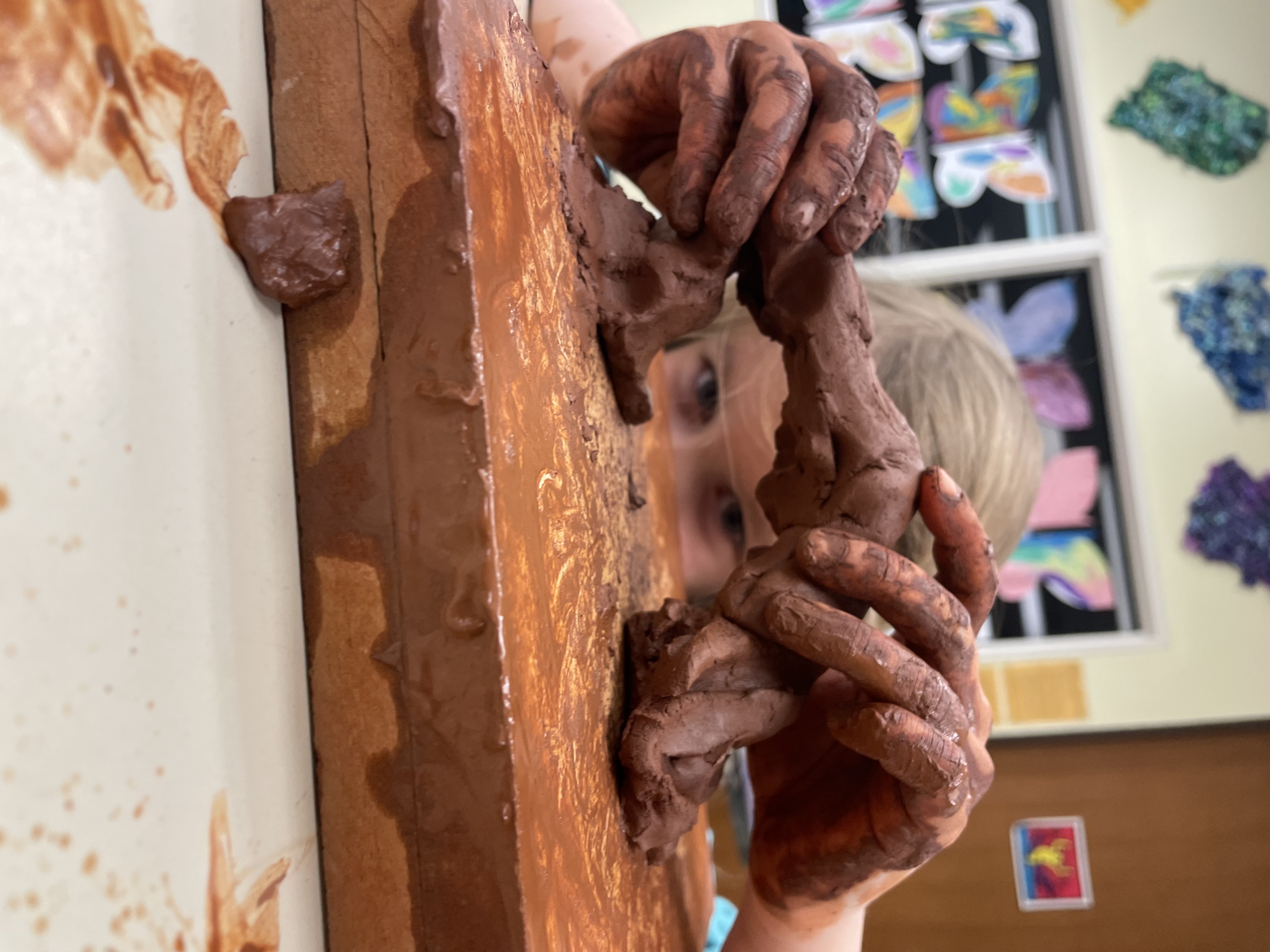
Teachers welcome children into the classroom! Parents are invited inside to help transition their little one into the day. We ask each child to put their "symbol" into the box as an attendence marker. Children will then be asked to wash their hands. We like to keep things as clean as possible!
We play (usually inside) until it is time for snack. Teachers will have open-ended activites available to all children if they choose to participate, but if not, they are welcome to play in any available area!
9:45 – Transition to Snack
Five minutes before snack time, teachers ring a bell, signaling to all the children that they have "5 more play minutes." After the five minutes have passed, teachers invite a child to sound our clean-up drum. This signals the class to clean up their activity and transition to the next part of our day.
10:00 – Snack Time and Outside Play
After washing hands and using the restroom, children sit with a teacher at a table and eat their snack in small groups. During meal times, teachers encourage communication between themselves and the children at their table. Asking questions like "how was your morning?", "what did you play with today?", "what will you play with when we go outside?" Even a game of I-Spy starts up once in a while.
When snack is complete, teacher facilitate readying for outdoor play. In the warmer months, this consists of sunscreen application and easy water bottle placement. In the colder months, this looks like putting on more layers and changing into appropriate foot wear.
Children are invited to come outside where we play in our beautiful, spacious outdoor area. Curriculum surrounding weather, gardening in our new garden, animals living there, and physical activities to develop motor skills are utilized.
11:45 – Transition Indoor
Transition to indoor gathering begins. The "5 more play minutes" bell is rung, and children are asked to start picking up what they played with. When the gathering bell is rung, children are brought inside where we wash hands for gathering.
12:00 – Gathering
Gathering is our opportunity to create connections as a group and deepen our understanding of each other. It usually consists of reading a story, passing the bowl, wishing well to those who could not attend, and occasionally, a group activity.
Passing the bowl is our daily tradition to welcome all those that attended that day. We create a circle around the carpet, pass the small bowl of water around to each child, and encourage the children to say to each other, "good afternoon. I'm glad you're here." This gives the children the opportunity to make a connection with a classmate and build our community. We water a plant in our room with the bowl, and then proceed with the rest of our gathering. 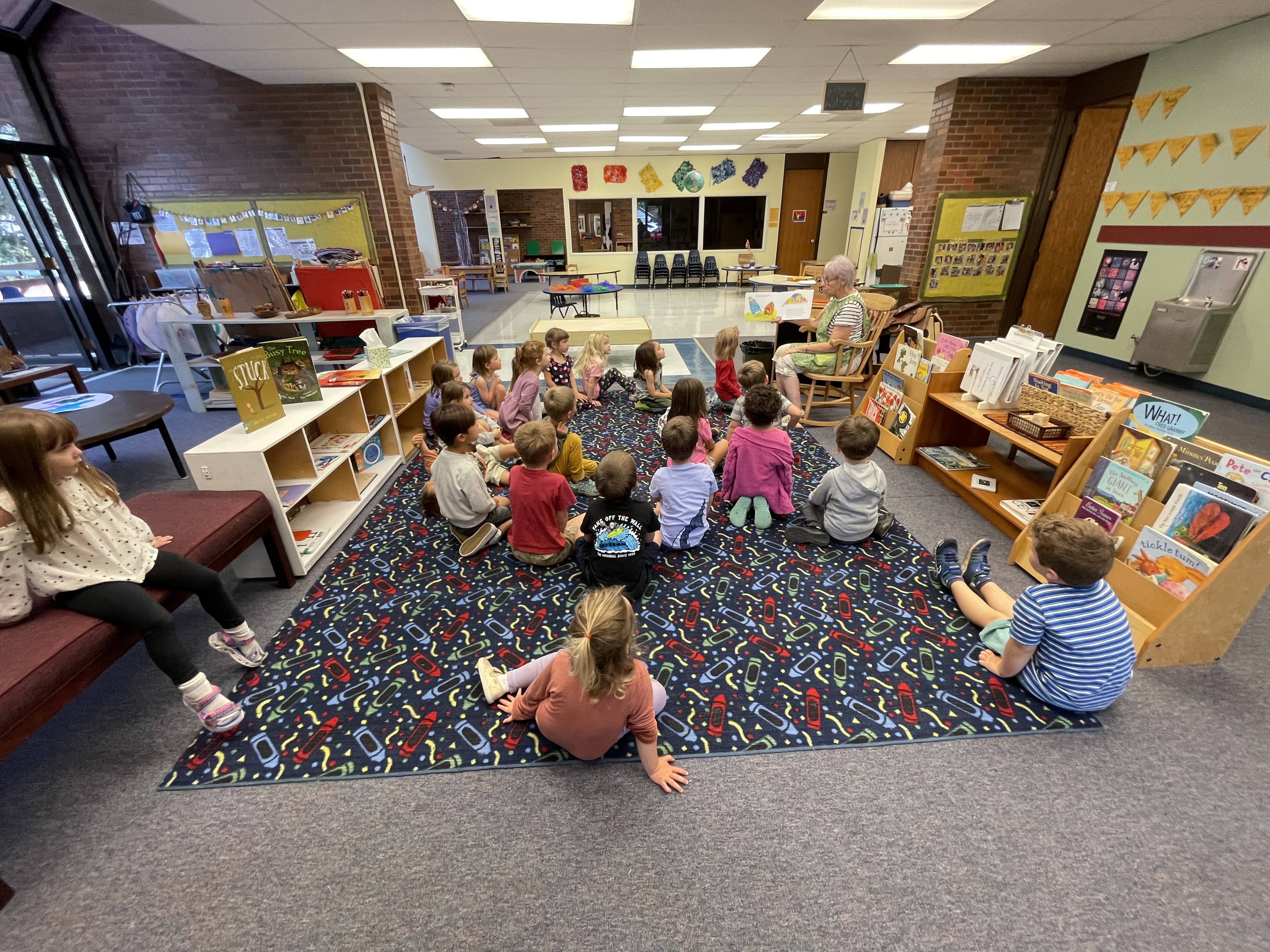
After passing the bowl, we read a story as a group. The stories help ground abstract concepts for our children. These books are about nature, friendships, consent, play, animals, families, and much more. After, we occasionally conduct a group activity. This activity usually surrounds curriculum we have noticed the children seeking. This includes art, fine motor development, physics, science, cooking, acting, and more!
This gathering time helps us slow down and focus on sharing ideas, problem solving, singing, dancing, enjoying stories, and spending time together as a community.
12:30 – Lunch
We transition to Lunch. This looks much like our transition to snack! We have all the children wash their hands and use the restroom if necessary. Then we sit and have lunch!
When children are done eating, they are asked to pack up their belongings and put everything into their cubbies. After which they may read a book or play until loved ones arrive.
1:30 – Loved Ones Arrive and Goodbyes
When a teacher sees a loved one, they will call the child's name. The child will gather the rest of their belongings, then be handed over to a trusted loved one. If someone other than their main guardian is picking up a child, they will be asked to show their identification to a teacher. We must have written permission from a guardian to hand over a child to someone new; an email or a slip of paper works fine.
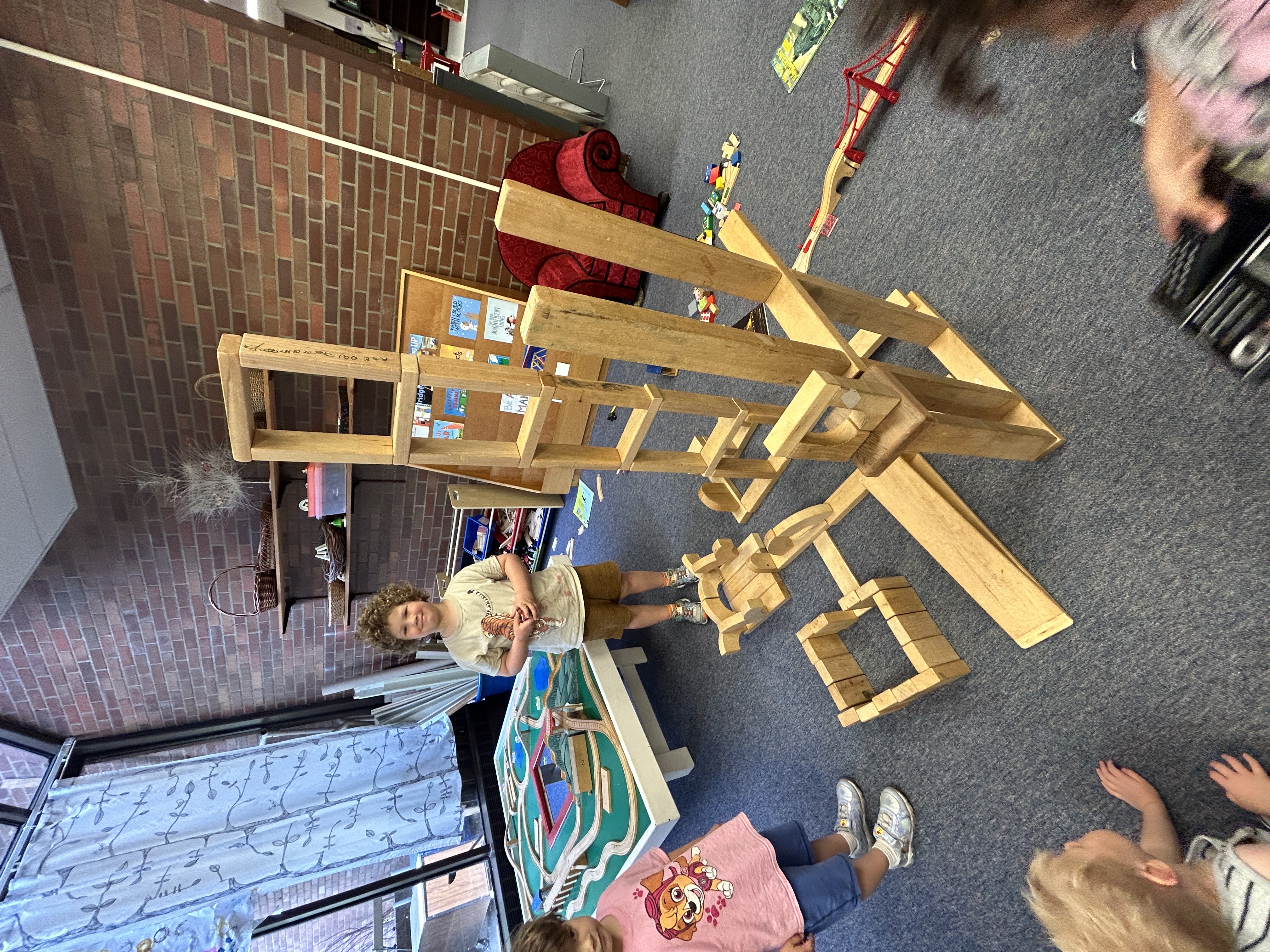
Our activities, both indoor and outdoor, consist of the following:
- Open-Ended Art: painting, drawing, cutting, gluing, molding with various clays and natural elements. This is a huge developmental opportunity. Nurtures creative nature, builds movement abilities, sense of accomplishment and beliefs in one's abilities grows, builds cognitive function. Their creations can be found in their art folders to go home at any time.
- Mark Making: writing tools, paper, staples, scissors, tape. They are encouraged to use their creativity to build the foundations for writing.
- Sensory Exploration: water, ice, and other sensory materials. Mixing, pouring, squeezing, touching.
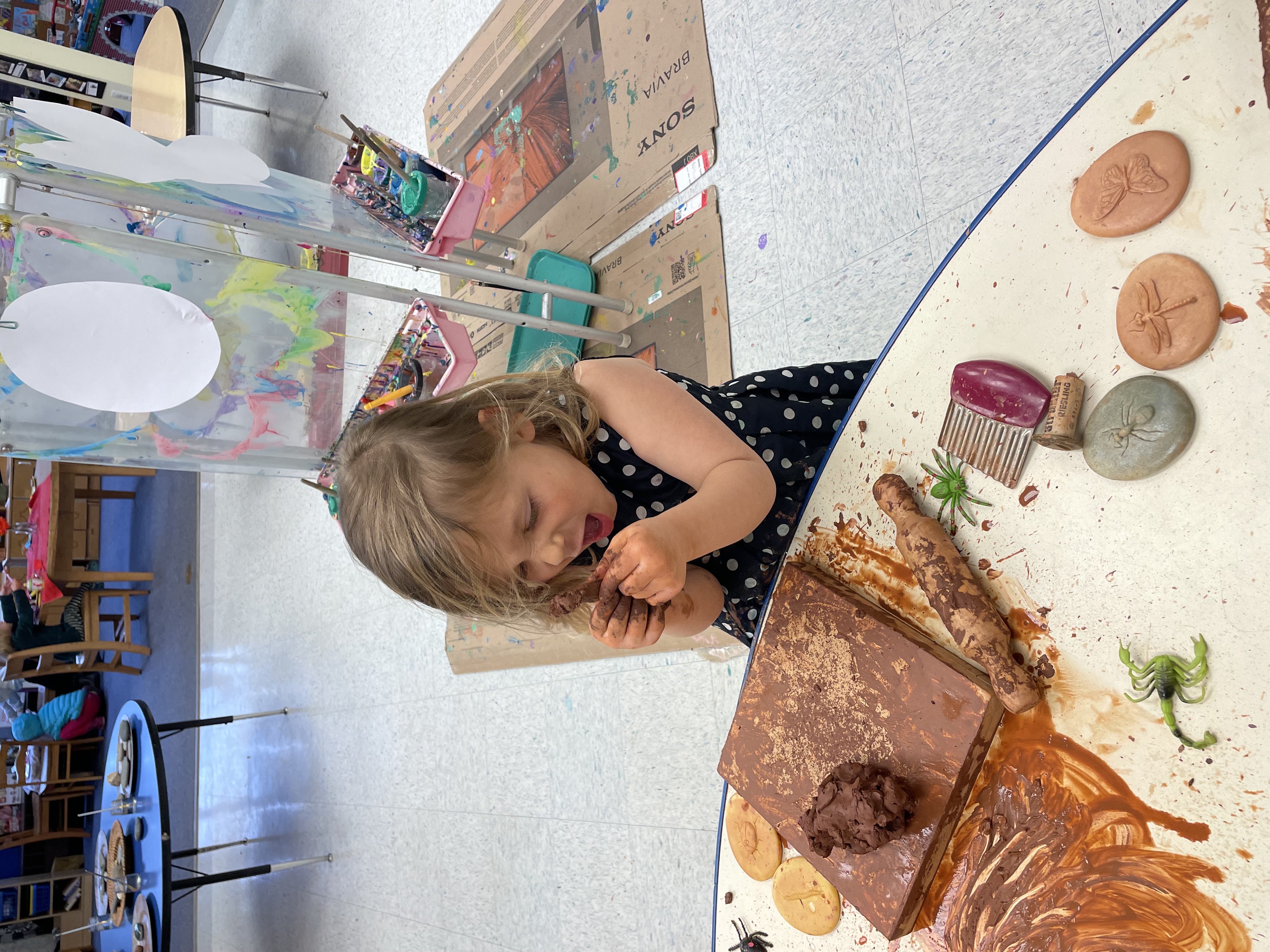 Dramatic Play: pretending, house play, costumes, props. This elevates children's social experiences, language, creative thinking, acceptance, and problem solving.
Dramatic Play: pretending, house play, costumes, props. This elevates children's social experiences, language, creative thinking, acceptance, and problem solving.- Loose Parts: these are everyday materials that offer children opportunities to create, build, construct, experiment and invent.
- Block Building and other construction: all sorts of blocks, lego, trains, tape measures, levels. This build awareness how space can be used and how ideas take on physical form, as well as creates a sense of accomplishment.
- Gardening and Tools: shovels, rakes, wheelbarrows, weeding, planting, watering. This builds a sense of creation within a child and having a part in something bigger.
- Mud Kitcken: mud, water, sand, bowls, mixing, splashing. A form of art and creation that builds awareness of natural elements and one's own abilities.
- Music/Movement: clapping, tapping, spinning, foot banging, balance, and building muscles. This strengthens the relationship between our arms, legs, and other body parts in coordination to the whole body. Additionally, helps us connect to other cultures. The best time for diversity conversations!
- Story in all its facets: oral story telling, telling your own story, singing stories, shadow stories, picture books, cultural readings.
- Outdoor: sandbox, tonka trucks, sholvels, bikes, hula hoops, outdoor kitchens, swings, playground. The most primary of needs for young children. Builds resilience, trust within ourselves, deciding and learning what is unsafe, awareness of the world around us, and much more.
All of these activities are accomplished through play and supported by teachers.
